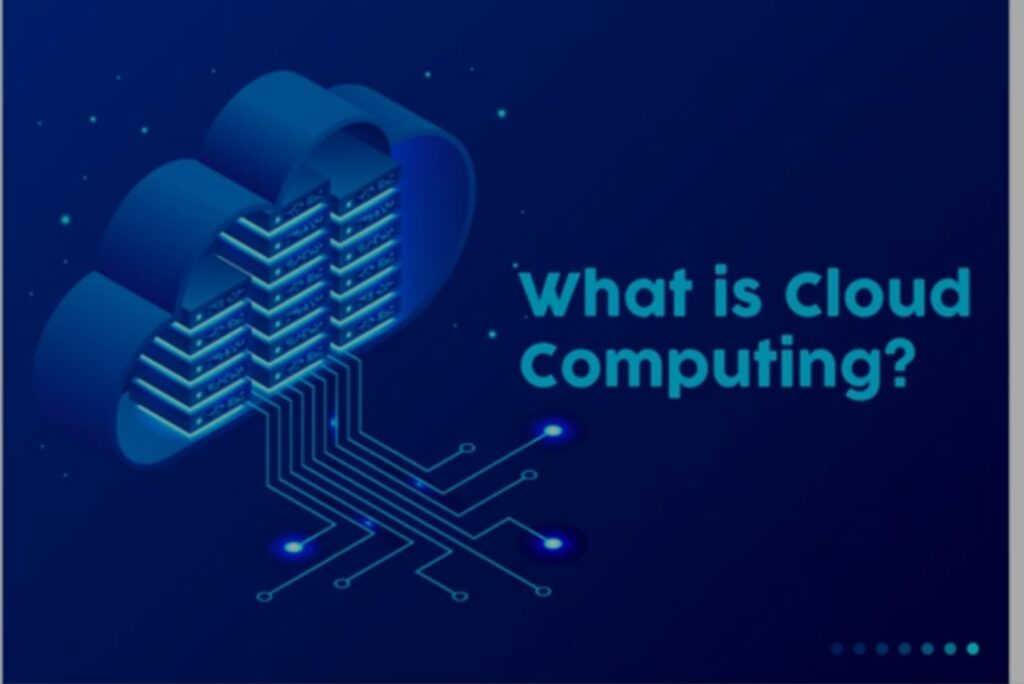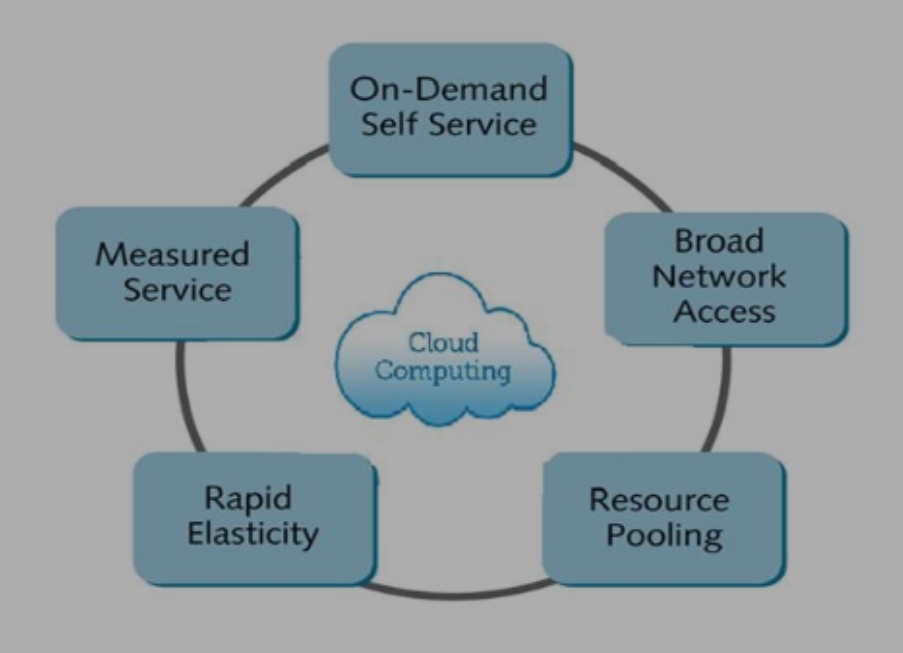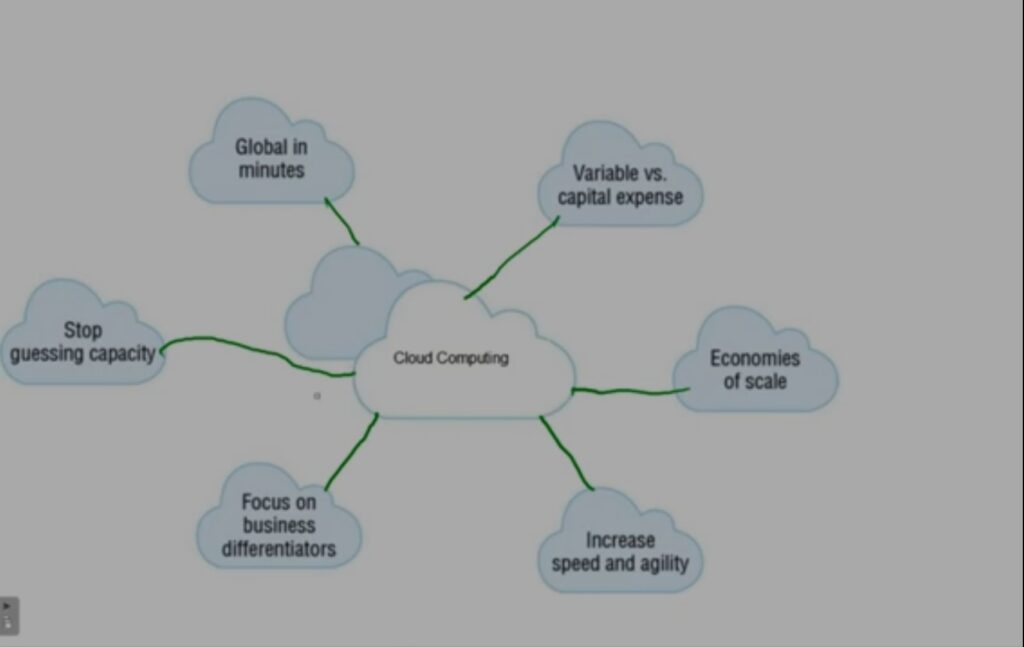Why Cloud computing?
Why would you choose Cloud computing over traditional hosting on a local server?
Cloud computing characteristics are :
==>On-demand self service
==>Broad Network Access
==>Rapid elasticity
==>Resource Pooling
==>Measured Service
==>Multi-Tenancy
==>Virtualization
==>Flexible pricing models
==>High Availability and Reliability
==>Automation
==>Security
==>Global Reach
==>Sustainability
what is cloud computing?
“The cloud” refers to servers that are accessed over the Internet, and the software and databases that run on those servers. Cloud servers are in data centres all over the world. By using cloud computing, users and companies do not have to manage physical servers themselves or run software applications on their own machines.
Cloud computing offers businesses more flexibility and scalability than hosting on a local server.It is a business model or service that combines technology like virtualization with a few of the latest trends.
And if you require extra bandwidth,a Cloud-based service can address that need promptly,rather than waiting for a complex and costly update to your IT infrastructure.

Users can customize their applications Using cloud services from anywhere if they have an Internet connection.In addition, Cloud computing enables efficient marketing of applications regardless of maintenance and cost.
To get a common understanding of Cloud computing,let’s start with the US National Institute of Standards and Technology,(NIST)’
NIST defines Cloud computing as a model for enabling convenient,on-demand network access toa shared pool of configurable computing resources. That can be rapidly provisioned and released with minimal management effort or service provider interaction.

Examples of computing resources include networks,servers, storage, applications, and services.This Cloud model is composed of five essential characteristics,four deployment models and three service models.
Let’s start with understanding the five essential characteristics of the Cloud,which include on-demand self service, broad network access,resource pooling, rapid elasticity, and measured service.
On demand self-service
. On-demand self-services: Users can access computing resources such as storage, processing power, and applications whenever they need them, without requiring human intervention from the service provider.
On demand self-service,the first characteristic, means you can access Cloud resources whenever required.
For example, a 24 -hour ATM or a vending machine at the office or store.Services are always available on all days of the year,regardless of whether a particular dayis a national holiday,weekend, festival day, and so on.
There are no exceptions other than when services are unable due to an outage or security breach.Broad network access means that cloud computing resources can be accessed through the network.
Broad network access
Broad Network Access: Cloud services are accessible over the internet from a wide range of devices, such as laptops, smartphones, tablets, and desktops, from anywhere, ensuring flexibility and mobility.
Public Cloud services could generally be accessible from anywhere and on any device With internet connectivity and browser capabilities.
Today, we are open to more than just desktops or laptops when accessing Cloud services.There are many other devices such as tablets, iPads,smartphones, e-readers, smart wearables, and so on.Also, to emphasize again,Internet access is mandatory for accessing public Cloud services.
However, in an on-premises private Cloud,an Intranet can only suffice for accessing Cloud services,provided the organization does not need to reach out to the entire world public.

Resource pooling
Resource Pooling: Resources such as storage, processing, and network bandwidth are dynamically assigned and reassigned across multiple applications based on user demand, where users don’t know the exact location of the resources.
With resource pooling,consumers save on costs when using a shared model.This model provides Cloud providers economies of scale,which they can pass on to their customers.Making the Cloud cost efficient.
Computing resources are pulled to serve multiple consumers using a multi-tenant model.Cloud resources are dynamically assigned and reassigned .according to demand without customers needing to concern themselves with the physical location of these resources.
Rapid elasticity
Rapid elasticity: Cloud services can quickly scale up or down based on the user’s needs. If a business suddenly needs more computing power or storage, it can increase its resources almost instantly. Conversely, it can scale down when less capacity is needed.
Rapid elasticity implies that you can increase or decrease resources as per your demand.Because of the elastic property of the Cloud,resources can be scaled up or down vertically scaling or scaled out as in horizontal scaling.
An ideal example would be to add resources when there is an increase in demand due to the increase in the number of users while shopping online,like during a holiday sale and the converse after the sales period.
Measured service
Measured Service: The resource utilization is tracked i.e. users are billed based on their usage of resources, such as storage, bandwidth, or computing power, similar to utilities like electricity or water. Both the user and resource provider are provided with a user account of what has been used. This pay-as-you-go model helps users manage costs effectively.
Measured service means that you only pay for what you use or reserve as you go.Measured services, however,do not apply to certain Cloud services,such as general email services like Gmail, Hotmail, Yahoo,social media sites like Facebook, Twitter, WhatsApp,and Cloud service evaluation on a trial basis like AWS,Azure and GCP, which are provided for free due tothe discretion policies extended by the respective service providers.
Measured service is also termed asa utility model of billing,where you are charged after the usage and at the end of the predefined period,like monthly electric charges.We will discuss the deployment and service models later in this module.
6.Multi-Tenancy: Multiple users (tenants) share the same physical infrastructure while keeping their data and services isolated from each other. This allows for cost savings and efficiency, as resources are shared but securely separated for each user.
7. Virtualization: Cloud computing providers use virtualization technology to abstract underlying hardware resources and present them as logical resources to users.
8. Flexible pricing models: Cloud providers offer a variety of pricing models, including pay-per-use, subscription-based, and spot pricing, allowing users to choose the option that best suits their needs.
9.High availability and reliability: Cloud providers often offer Service Level Agreements(SLAs) that guarantee a certain level of uptime and reliability.
The infrastructure is designed tobe highly available and resilient, with data centers spread across different geographical locations to prevent downtime
10. Automation: Cloud computing services are often highly automated, allowing users to deployand manage resources with minimal manual intervention. For example, automatic backups,software updates, and scaling.
11. Security: While security is a shared responsibility between the provider and the user, cloud providers invest heavily in security measures like encryption, firewalls, and identity management. They also offer tools and services that allow users to control access and protecttheir data.
12. Global Reach: Cloud computing services are available globally, enabling businesses to deploy applications and serve customers around the world without needing to build local infrastructure.This global reach is particularly beneficial for multinational organizations.
13.Sustainability: Cloud providers are increasingly focused on sustainable practices, such as energy-efficient data centers and the use of renewable energy sources, to reduce their environmental impact.( Complete overview of cloud computing in this domain https://www.youtube.com/@Sparkbalraju
gmail.balrajurockstarbl@gugutibhagyagmail-com
